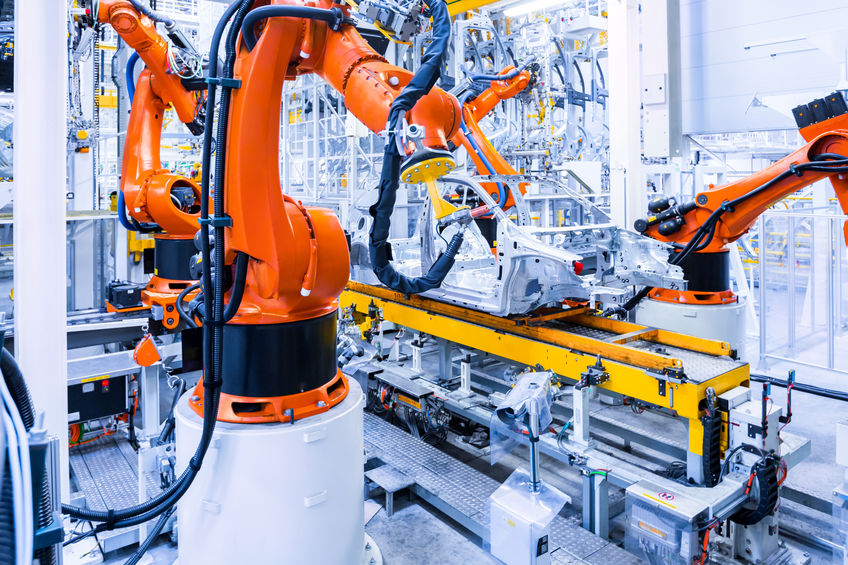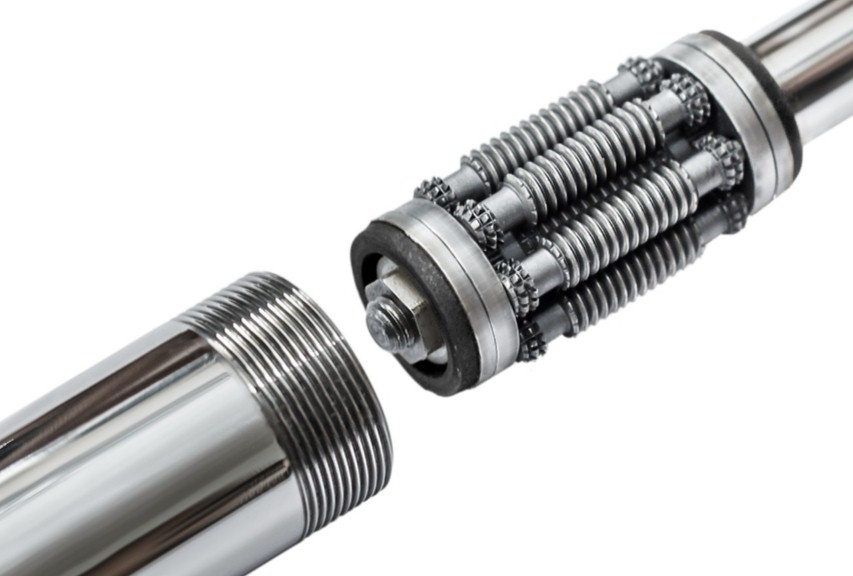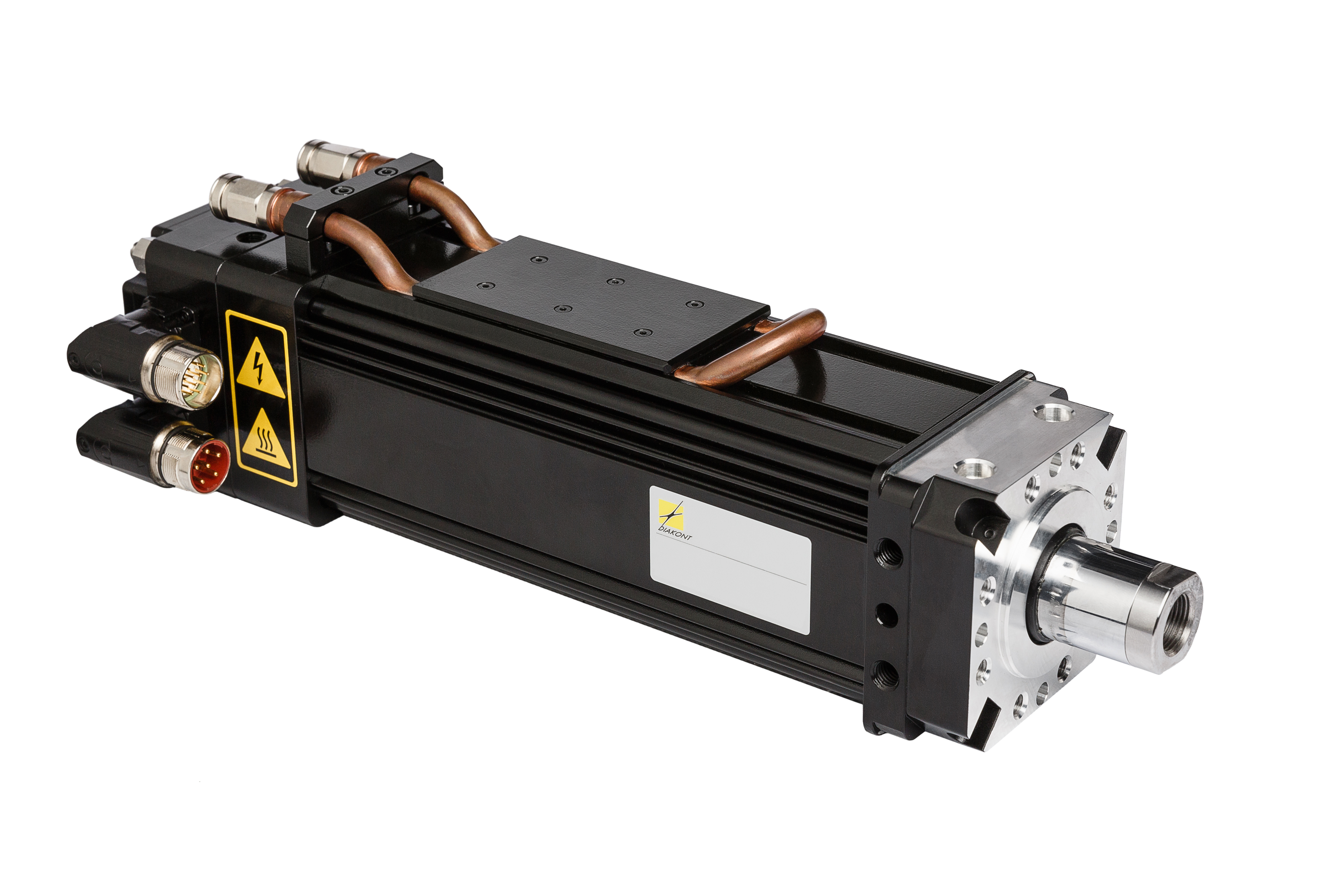Electric actuator with liquid cooling
Normally, the electric actuator is cooled with room air convection cooling. In certain cases, however, water cooling is necessary.
Possible reasons are:
Increased room temperature
A high ambient temperature can be a reason for water cooling. If the sum of self-heating (by spindle and motor) plus the initial ambient temperature becomes too high, water cooling is necessary.
Intensive load cycle
Scenario: there is an ordinary ambient air temperature (e.g. 25°C) and the electric actuator operates at a certain cycle rate. However, the operator wants to increase the cycle rate in order to increase production. He realizes: the installed electric actuating cylinder with room air convection cooling becomes too hot. Solution: water cooling. Depending on the load cycle (force vs. time, speed vs. time), the clocking can possibly be doubled.
The DA99 electric actuator is shown on the right. Clearly visible: the water inlet and outlet as well as the copper pipes that carry the water to cool the housing of the actuator cylinder.
Please contact us to consult your project. With simulation software we can forecast with an accuracy of +/-10% which cycle will be possible at what room temperature.




